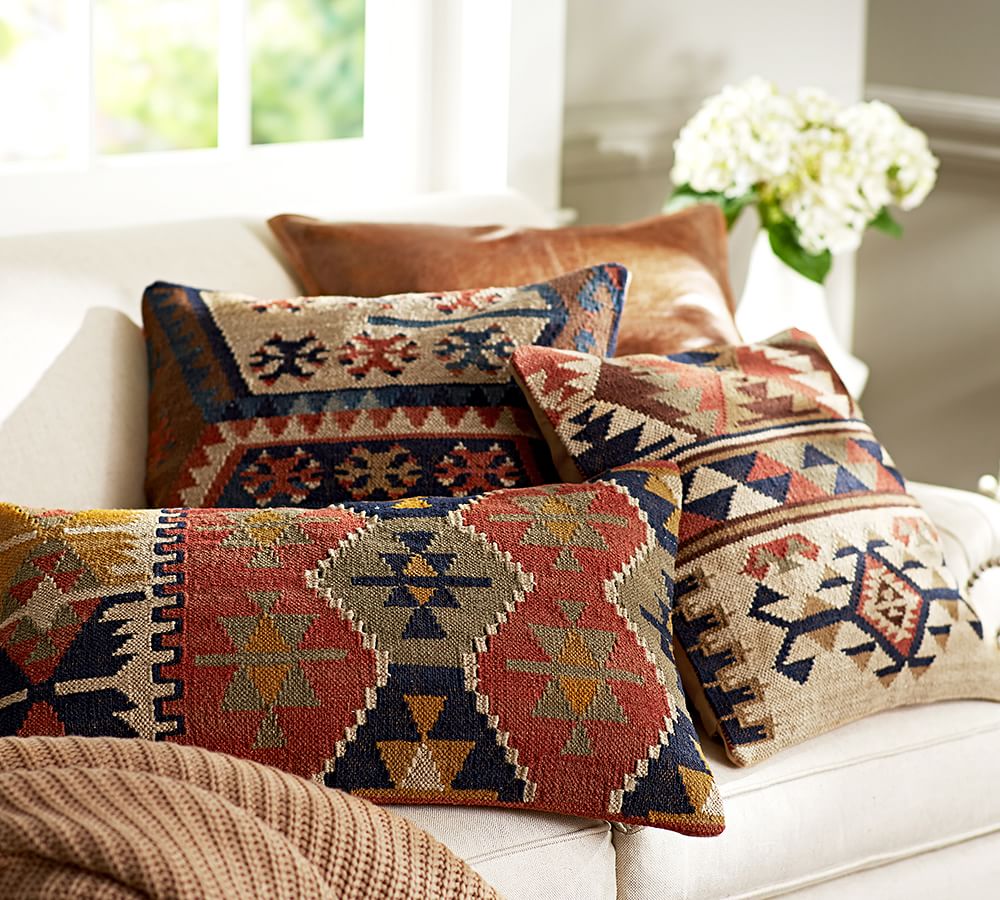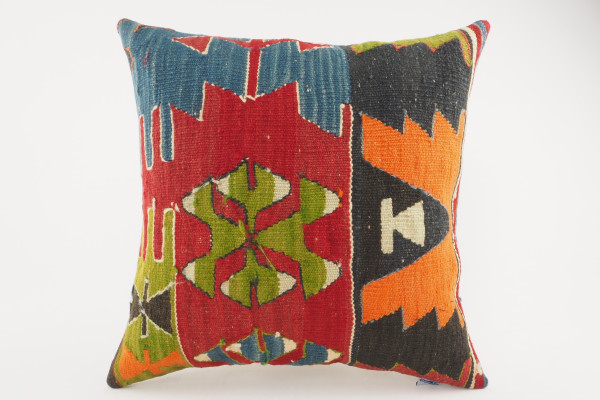Welcome to the colorful world of kilim decorative pillows! If you’re looking to infuse your home with a touch of culture, texture, and warmth, you’re in the right place. In this comprehensive guide, we’ll explore everything you need to know about kilim pillows—from their rich history and unique designs to styling tips and care instructions. Let’s dive in!
What Are Kilim Decorative Pillows?
Kilim decorative pillows are made from traditional flatwoven rugs known as kilims, which originate from various regions, particularly in the Middle East and North Africa. These pillows are not just home accessories; they are pieces of art that tell stories of the cultures and artisans behind their creation.
History of Kilims
The term “kilim” refers to a type of weaving technique that has been used for centuries to create functional and beautiful textiles. Unlike pile rugs, kilims are flatweave, making them lighter and more versatile. Each kilim tells a unique story, with colors and patterns that reflect the geometrics of the weaver’s life and surroundings.
Origin and Evolution
Historically, kilims served practical purposes—such as flooring, wall hangings, and bedding. However, as their aesthetic value was recognized, they transitioned into decorative items. Today, kilim decorative pillows serve as vibrant accents in modern interiors.
Why Choose Kilim Decorative Pillows?
There are countless reasons to incorporate kilim decorative pillows into your home. Here are a few to consider:

- Unique Designs: Each kilim pillow is one-of-a-kind, with distinct patterns and colors.
- Durability: Kilim fabrics are robust and can withstand daily use.
- Versatility: They complement various interior styles, from bohemian to contemporary.
- Cultural Significance: Owning a kilim pillow connects you to a rich cultural heritage.
Styles of Kilim Pillows
Kilim decorative pillows come in an array of styles and designs. Here, we’ll discuss some of the most popular types.

Traditional Kilim Pillows
Traditional kilim pillows feature classic motifs and colors typical of the region from which they originate. They often showcase symbols that have specific meanings, such as fertility, protection, and prosperity.
Modern Kilim Pillows
Modern interpretations of kilim pillows may incorporate abstract designs or unexpected color combinations. These pillows can seamlessly blend into contemporary decor while still paying homage to their traditional roots.

How to Style Kilim Decorative Pillows
Styling your living space with kilim pillows is an opportunity to express your personality. Here are some tips to help you integrate them into your decor:
Layering Textures
Kilim pillows work wonderfully with various textures. Pair them with velvet or cotton pillows for a cozy look. Mix and match sizes and patterns for an eclectic vibe.

Color Coordination
While kilim pillows are often vibrant, they can be paired with muted tones to create a balanced look. Use a color wheel to find complementary shades that will enhance your overall decor scheme.
Caring for Your Kilim Decorative Pillows
To ensure your kilim pillows maintain their beauty and longevity, proper care is essential. Here are some tips:

Cleaning
- Vacuum Regularly: Use a vacuum cleaner with an upholstery attachment to remove dust.
- Spot Clean: For stains, use a damp cloth with mild detergent. Avoid soaking the fabric.
- Professional Cleaning: Consider getting them professionally cleaned once a year.
Storage
If you need to store your kilim pillows, keep them in a cool, dry place, away from direct sunlight to prevent fading. Use breathable fabric bags instead of plastic to avoid moisture buildup.

Comparison Table: Kilim vs. Other Decorative Pillows
| Feature | Kilim Pillows | Throw Pillows | Down Pillows |
|---|---|---|---|
| Materials | Woven textiles | Various fabrics | Down/feathers |
| Durability | Highly durable | Varies by material | Less durable (can flatten) |
| Style | Artisan patterns | Modern to classic designs | Soft and plush |
| Maintenance | Low | Varies | Requires fluffing |
Pros and Cons of Kilim Decorative Pillows

Pros
- Unique, artistic designs
- Durable and long-lasting
- Easy to clean and maintain
- Adds cultural richness to home decor
Cons
- Can be pricier than standard decorative pillows
- Limited availability in some regions
Where to Buy Kilim Decorative Pillows
Finding the perfect kilim decorative pillow can be an enjoyable quest. Here are some recommendations for places to explore:
Online Retailers
- Etsy: A treasure trove of handmade and vintage options.
- Amazon: Offers a wide variety of styles and price points.
- Wayfair: Known for home decor, with many kilim pillow options.
Local Markets
Visiting local artisans or markets can be a rewarding experience. You can often find unique pieces while supporting local craftspeople.
FAQs About Kilim Decorative Pillows
What materials are kilim decorative pillows made from?
Kilim pillows are typically woven from wool, cotton, or a blend of both. The natural fibers make them durable and comfortable.
How do I choose the right size kilim pillow for my space?
Consider your furniture scale and arrangement. A mix of sizes can create a visually appealing focal point, while larger pillows can anchor a space.
Are kilim pillows suitable for outdoor use?
While some kilim pillows are made for outdoor use, most are best suited for indoor environments. If you plan to use them outside, look for water-resistant options.
Conclusion
Kilim decorative pillows are more than just beautiful accents; they are a reflection of cultural history and artistry. By choosing kilim pillows for your home, you not only enhance your decor but also bring a piece of the world into your living space. Whether you opt for traditional designs or modern interpretations, these pillows are sure to add character, warmth, and style to any room.
If you’ve enjoyed this guide and have found it useful, consider sharing it with your friends or family who might also appreciate the beauty of kilim decorative pillows. Happy decorating!